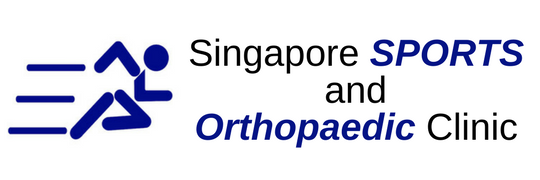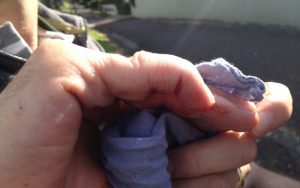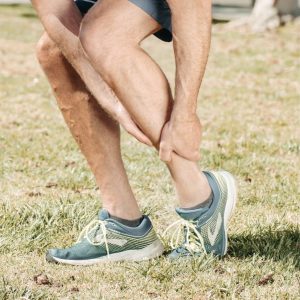Calcaneus fractures, or heel bones fractures, is the most common of fractures of the tarsal bone. Tarsal bone fractures account for 2% of all adult fractures and of those, 60% are calcaneus fractures.
Causes
Usually caused by a high-impact collision on the calcaneus, this type of fracture is most often incurred from jumping or falling from a great height or motor vehicle accidents. Patients with osteoporosis are also at greater risk for this fracture as their bones have lower mineral density and thus more brittle.
Patients with diabetes are more susceptible to fractures and have a high risk for infection and healing complications that might lead to limp amputation. It is important to let your doctor know about your full health condition beforehand.
Symptoms
Fracture patients would experience pain, bruising, swelling, heel deformity and may be unable to walk. Even if pain is tolerated, patient would walk with a limp as the muscle and tendon is not strong enough to fully support the weight. The intensity of the symptoms depends on the severity of the damage.
Types of treatment
There are a few considerations your doctor put into deciding your course of treatment. It depends on the severity of the fracture, the cause of injury and whether your health condition allows you to respond well to the treatment.
Usually surgery is needed to put the bones back together except for mild cases of cracked bones. Different treatments are used for the different types of fractures:
- Stable fracture
The broken ends of the bones are still correctly aligned. No surgery is needed. The leg is immobilized in a cast to allow the bones to heal.
- Display fracture
The bones are displaced and not aligned. The pieces are put back together with surgery. Your doctor may recommend waiting till the swelling has gone down before going through surgery to reduce the risk of infection. This is done by immobilizing the leg and elevating it for a few days.
- Open fracture
The bones are broken through the skin and usually damage the muscles, tendons and ligaments. Immediate surgery is required as the wound is open and exposed to the environment.
- Closed fracture
This is a closed wound and the skin is not broken. However, internal soft tissues may be badly damaged.
- Comminuted fracture
The bones are shattered into several pieces and the damage is severe. Caused by a great impact like a head-on car collision.
Surgical Procedures:
- Percutaneous Screw Fixation
Small incisions are made to place screws in to hold the bones together. This procedure only viable if the broken bones are still in large pieces and can be pulled back into alignment.
- Open Reduction and Internal Fixation
The bone fragments are pieced back in place and held together with screws and metal plates.
Recovery Process
For nonsurgical treatment, the injury can recover in 6-8 weeks. Surgical treatments take longer to recover. It might require 3-4 months before normal activities can be resumed. Severe fractures might even take up to 1-2 years before full recovery is achieved.
If pressure is applied on the injury during the healing process, it might further aggravate it and the screws might break, causing the bones to collapse. This causes serious repercussions and it would be even harder to fully recover.








